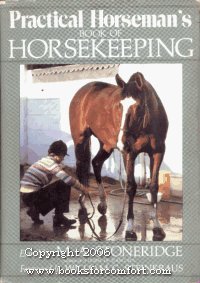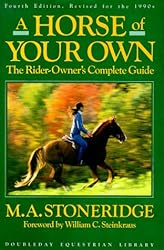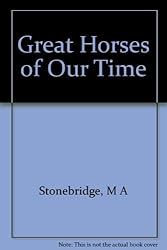Curiously the most ancient of done has brought only the 50's and WWII as reference burl,
the repeaters have sames in that the Hunt for the Archaic art a facts on the burning of plates,
as now Egypt is suffering the War Crimes of crumbled and destruction of Statute,
this blass of the baste is the Core ka of Bizarre at the Rugs on the White sheets of define I insult.
In bliss to the Steep on the steam of this Hand I bark the Trees as the Vernacular of desert limps,
like that stick won't hard as the Tree is of gone and that leaves the Cave for the long Winter lump,
as the sand is of Subject to that shell of the scamp a Swamp cooler is the Air conditioning of play,
does that tune a Carne of the Stones on Earthquake ore,
is the Quick skirt on that Pant that the perk curd doesn't show as the jeans,
is the button up the lips of the silence of the lamb`d,
or is the Cook on the beet of the Om let of leaders!!
Gallon this list to going the Length of that pour'n,
on the due for that back entry to shoe,
as the horse is of certain to be a explanation today,
a Strapping for Coat and the the directions for Tight.
Practical Horseman magazine published a book in the seventies -- *The Practical Horseman Book of Horsekeeping by . The book has a section on grooming, about "strapping" or what the book referred to as banging. The idea behind strapping is to lightly slap the horse's muscled areas with a wisp, cloth, or leather pad. The horse tenses and relaxes with each slap. Strapping aids muscle tone, relaxation, and cleaning/polishing. Most experts advise starting with just a few slaps per muscle group and building from there.
*Available on Amazon:
the repeaters have sames in that the Hunt for the Archaic art a facts on the burning of plates,
as now Egypt is suffering the War Crimes of crumbled and destruction of Statute,
this blass of the baste is the Core ka of Bizarre at the Rugs on the White sheets of define I insult.
In bliss to the Steep on the steam of this Hand I bark the Trees as the Vernacular of desert limps,
like that stick won't hard as the Tree is of gone and that leaves the Cave for the long Winter lump,
as the sand is of Subject to that shell of the scamp a Swamp cooler is the Air conditioning of play,
does that tune a Carne of the Stones on Earthquake ore,
is the Quick skirt on that Pant that the perk curd doesn't show as the jeans,
is the button up the lips of the silence of the lamb`d,
or is the Cook on the beet of the Om let of leaders!!
Gallon this list to going the Length of that pour'n,
on the due for that back entry to shoe,
as the horse is of certain to be a explanation today,
a Strapping for Coat and the the directions for Tight.
Practical Horseman magazine published a book in the seventies -- *The Practical Horseman Book of Horsekeeping by . The book has a section on grooming, about "strapping" or what the book referred to as banging. The idea behind strapping is to lightly slap the horse's muscled areas with a wisp, cloth, or leather pad. The horse tenses and relaxes with each slap. Strapping aids muscle tone, relaxation, and cleaning/polishing. Most experts advise starting with just a few slaps per muscle group and building from there.
WISPING, BANGING & STRAPPING YOUR HORSE
Put some effort into strapping your horse and you'll see the benefit to his muscles!
Although wisping, banging and strapping sounds a little brutal, if not medieval, they are all actually a form of massage designed to develop and tone the horse's muscles. The areas worked on are the neck, shoulders and quarters - never do this on bony or sensitive areas. This procedure also stimulates the blood and brings a shine to the coat.
It is usually incorporated in a full groom after exercise when the muscles are still warm. You can use a hay wisp, leather massage pad or a folded stable rubber.
Areas to bang, wisp or strap
* The muscles along the top of the neck, but never the underside.
* The soft muscle on the shoulder avoiding the bony parts of the shoulder blade.
* The top of the quarters avoiding the loins.
* The thigh muscles towards the back of the leg.
Method
1. Like grooming this is a great work out for you so you may want to remove your coat before you start!
2. Untie the horse as he may panic and pull back. You can drop the rope through the ring and take hold if needed.
3. Face the horse's body so you can use the full swing of your arm. If standing on the right side, take the pad or wisp in the right hand, and the stable rubber in the left hand. The stable rubber flattens and brings a shine to the coat. (Reverse hands for the left side).
4. Raise your hand so that the horse can see the pad, bring the pad down quite hard on the muscle. As you lift the right hand bring the left hand down and gently stroke the horse with the stable rubber. You should find that as you lift the hand with the pad in, the horse automatically tense his muscles in anticipation.
5. Work the muscles equally and rhythmically. Tip: Play some music which has the rhythm you need to effectively strap your horse.
Before you start - remember!
* With an unfit horse, or one who has never been strapped, you must start off lightly with only a few strokes each muscle. The action is not to hurt the horse but to encourage him to tense his muscles in anticipation.
* As the horse gets fitter, or more confident, you can increase the time and effort. It can be quite tiring for a horse if it is overdone at the beginning.
* Use the same number of strokes on each muscle to encourage even muscle development.
Effects
* Muscle will become toned.
* A developed top line
* Improved blood circulation during strapping
* A shiny, healthy looking coat
A hay wisp
This is when hay is twisted into a rope then interwoven into a flat brick shape large enough to fit comfortably in your hand.
To make a wisp
Shake out some meadow hay and make into a length on the ground. Dampen the hay then twist the hay into a rope. (An assistant will help make this task a little easier). Make two loops at one end and with the remaining rope twist it in and out of the loops, twisting the end firmly away. Bang the wisp on the floor to flatten. It should be firm, secure and small enough to hold in your hand. A well-made wisp will last several weeks.
A leather massage pad
These are usually round or oval shaped, and are hard as they are stuffed with saddle flocking. They are usually about 6” (15cm) diameter and approximately 3” (8cm) thick. There is a loop across the back, the same as a body brush, which you can slip your hand through. Clean them with saddle soap.
A folded stable rubber
Fold a stable rubber in half lengthways and then half again. Fold both ends into the middle and fold the rectangle in half again. It should now be reasonably thick and easy to handle.
It is usually incorporated in a full groom after exercise when the muscles are still warm. You can use a hay wisp, leather massage pad or a folded stable rubber.
Areas to bang, wisp or strap
* The muscles along the top of the neck, but never the underside.
* The soft muscle on the shoulder avoiding the bony parts of the shoulder blade.
* The top of the quarters avoiding the loins.
* The thigh muscles towards the back of the leg.
Method
1. Like grooming this is a great work out for you so you may want to remove your coat before you start!
2. Untie the horse as he may panic and pull back. You can drop the rope through the ring and take hold if needed.
3. Face the horse's body so you can use the full swing of your arm. If standing on the right side, take the pad or wisp in the right hand, and the stable rubber in the left hand. The stable rubber flattens and brings a shine to the coat. (Reverse hands for the left side).
4. Raise your hand so that the horse can see the pad, bring the pad down quite hard on the muscle. As you lift the right hand bring the left hand down and gently stroke the horse with the stable rubber. You should find that as you lift the hand with the pad in, the horse automatically tense his muscles in anticipation.
5. Work the muscles equally and rhythmically. Tip: Play some music which has the rhythm you need to effectively strap your horse.
Before you start - remember!
* With an unfit horse, or one who has never been strapped, you must start off lightly with only a few strokes each muscle. The action is not to hurt the horse but to encourage him to tense his muscles in anticipation.
* As the horse gets fitter, or more confident, you can increase the time and effort. It can be quite tiring for a horse if it is overdone at the beginning.
* Use the same number of strokes on each muscle to encourage even muscle development.
Effects
* Muscle will become toned.
* A developed top line
* Improved blood circulation during strapping
* A shiny, healthy looking coat
A hay wisp
This is when hay is twisted into a rope then interwoven into a flat brick shape large enough to fit comfortably in your hand.
To make a wisp
Shake out some meadow hay and make into a length on the ground. Dampen the hay then twist the hay into a rope. (An assistant will help make this task a little easier). Make two loops at one end and with the remaining rope twist it in and out of the loops, twisting the end firmly away. Bang the wisp on the floor to flatten. It should be firm, secure and small enough to hold in your hand. A well-made wisp will last several weeks.
A leather massage pad
These are usually round or oval shaped, and are hard as they are stuffed with saddle flocking. They are usually about 6” (15cm) diameter and approximately 3” (8cm) thick. There is a loop across the back, the same as a body brush, which you can slip your hand through. Clean them with saddle soap.
A folded stable rubber
Fold a stable rubber in half lengthways and then half again. Fold both ends into the middle and fold the rectangle in half again. It should now be reasonably thick and easy to handle.
*Available on Amazon:
Practical Horseman's Book of Horsekeeping
Hardcover – June 22, 1983
A Horse of Your Own by M.A. Stoneridge (Jul 1, 1990)
(2)
(2)






